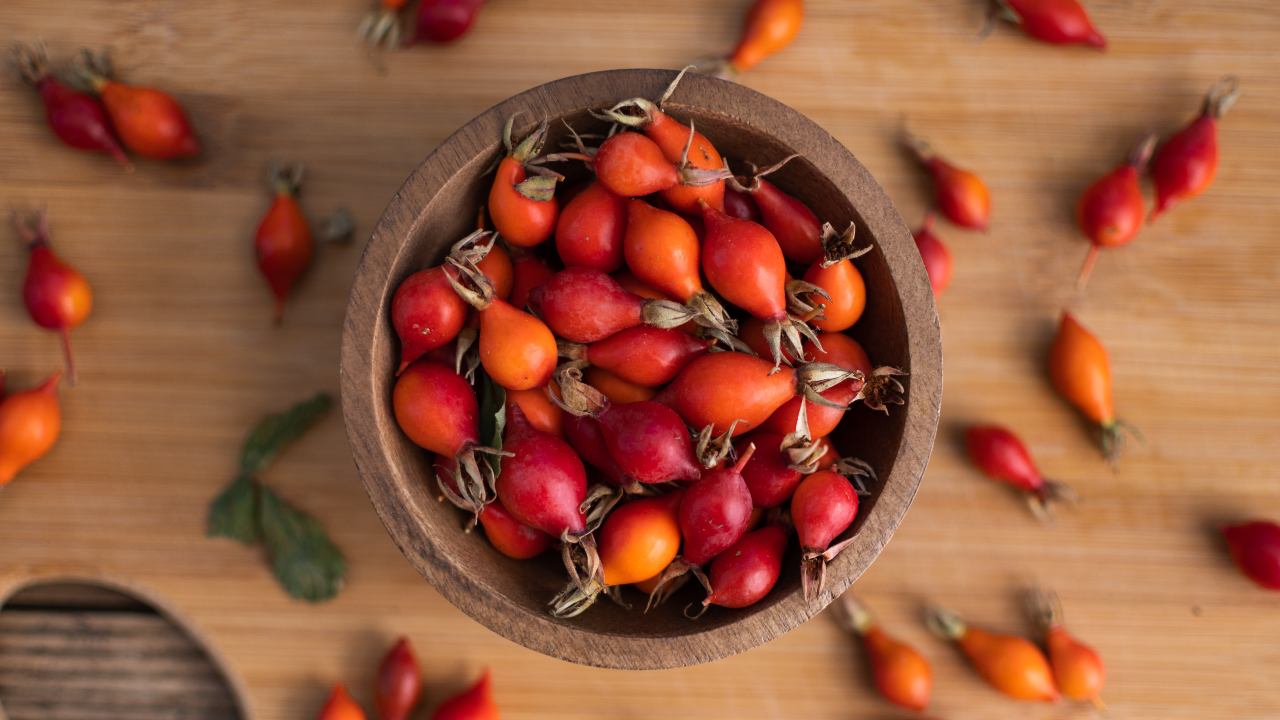Living seasonally is something that came naturally and effortlessly to our ancestors, who would have foraged for detoxifying greens in Spring, sweet fruits in Summer, and the treasure trove of Autumnal foods we’ll discover in this blog. It is because of seasonal eating and seasonal living that we’re here today, because foods that grow in each season give us specific benefits that can help keep us well and healthy all year long. Today however, we’ve strayed from our roots and are now more disconnected than ever from the world around us. Yes, we can eat tropical fruits in the middle of Winter, and enjoy imported exotic foods whenever we like, But is that really what our bodies want and need? In order to feel well through the seasons, it often comes down to not searching for the next superfood from a far-flung place, but looking closer to home – sometimes in your own back garden!
The benefits of seasonal living
As you may have read in our Spring and Summer Eating Seasonally guides, consuming foods grown around us has huge benefits for gut health, immunity, digestion, and even our mental health. When it comes to living seasonally however, it’s about more than simply what we eat. Seasonal living is about how we spend each day. It’s about how we choose to allocate our time and the way we interact with our community. As well as the foods you eat this season, thinking about how you’ll prepare them, when and where you’ll eat them, and who you’ll eat them with can have a big impact.
Summer to Autumn
In bright Summer months, it’s natural for us to spend more time socialising and exploring the outdoors, so a cooling salad and platter of juicy fruits enjoyed at big picnic gathering helps connect all of our senses to the season. Autumn though, is a season of turning inward – as you’ll learn in a moment. Therefore, a warm and comforting stew enjoyed with loved ones around a candlelit dinner table helps our bodies and minds move into a different state of being. The benefits of considering both what we eat and how we live through the seasons is a profound way to help us maintain a sense of balance and presence across the year.
Below you’ll discover the foods in season this Autumn, the benefits they give us, plus five seasonal Autumn recipes to enjoy. If you live in the Southern Hemisphere and you’re moving into Spring, you may like to opt for more cooling and detoxifying Spring recipes, such as Ayurvedic Herbal Teas For Spring or the Superfood Tabbouleh, which is great for your digestive health and skin.
Seasonal nutrients
After the bright, hot days of Summer, Autumn arrives with the message to slow down, and the foods in season at this time of year reflect this too.
After the bright, hot days of Summer, Autumn arrives with the message to slow down, and the foods in season at this time of year reflect this too. Many Autumnal seasonal foods take longer to grow than Spring greens and Summer fruits, and so when we eat them, it serves as a reminder to take our time this season too. Plums, hawthorn, hazel, rosehip, elderberries, mushrooms, sloes, damsons, sweet chestnuts and wood sorrel arrive in the hedgerows and forest floors, whilst apples, pears, squash, pumpkin, cabbage, carrots and beetroot are likely ready to harvest from the vegetable patches now. These foods are generally heartier, more satisfying and deeper in flavour than Summer foods, and they often require longer, slower cooking times too.
Autumnal foods
Nature gives us exactly what we need, when we need it, and Autumn is no different. As the temperatures drop and the ‘cold and flu season’ draws closer, the foods in season in Autumn help protect the immune system and bolster the body’s natural defences in preparation for Winter. Elderberries are one of these powerful immune-boosting Autumnal foods, packed with antioxidants, vitamins A and C, potassium, iron, folate and calcium. Research also shows that substances present in elderberries can stop the influenza virus from entering and replicating in human cells, and has strong activity against viruses, including the flu. Rosehip is another seasonal Autumn ingredient that can help ward off illness; the high levels of vitamin C, A and E, coupled with anti-inflammatory properties make it a natural medicine you can use to create an immune-boosting tonic.
Learn breathwork techniques to boost your immunity with Veronique Gouthier in this class.
The Yin and Yang of the year
Whilst Spring and Summer encompass vibrant, dynamic, bright, light, extroverted ‘Yang’ energy, Autumn and Winter are host to the dark, still, introspective ‘Yin’ energy. As we move deeper into Autumn, this is a time to invite more calm, restful ‘Yin’ energy into your life and your home. According to Traditional Chinese Medicine, each season holds a different movement of energy too, and Autumn is about ‘downward’ movement; you could think of this as slowing down, becoming more grounded, connecting back to your roots, allowing life to settle down, or simply taking more down time for yourself. If you’re able to connect with the different types of energy throughout the seasons, you’re more likely to feel balanced all year long.
Autumn Yin sequence with Katy Appleton
Try this Yin sequence, designed to help to support your immune system during the change in season from the heat of Summer to the more introspective months of Autumn and Winter.
What’s in Season in Autumn?
Immune-boosting, hearty and nourishing foods help protect us from illness and give us a sense of comfort this season. Try; Apples, pears, beetroot, broccoli, cabbage, carrots, celeriac, kale, leeks, marrow, onions, parsnips, potatoes, quince, squash, swede, turnip, pumpkin, elderberry, plums, damson, rosehip, figs, hazelnut, sweet chestnut.
5 Autumn Recipes
1. Spiced Squash & Orange Soup
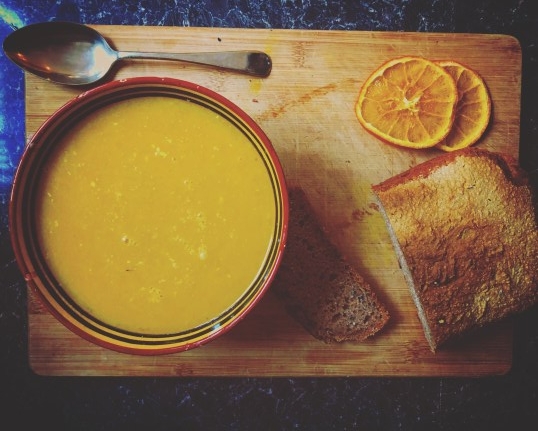
On those dark, cold Autumn nights, this warming and hearty soup is like a bowl of sunshine. Full of vitamins C, A and B, squash is also high in gut-friendly fibre. This soup is also rich in minerals like potassium, magnesium and manganese, which are important for a calm and healthy nervous system, and balanced blood pressure. Oranges may be a surprising ingredient in this Autumnal soup, but their high vitamin C content makes them an immune-boosting powerhouse, and they’ll be in season from late Autumn. I love serving this soup with generously buttered sourdough bread.
INGREDIENTS (serves 4 with enough for leftovers)
- 1 large butternut squash
- 1 red onion
- 2 cloves garlic
- 1 can coconut milk
- 1 litre stock or broth
- ½ tsp cumin seeds
- ¼ tsp ground coriander
- 1 tsp garam masala
- ¼ tsp chilli
- 1 tbsp coconut oil
- Zest of ½ an orange + juice
- Salt and pepper to taste
METHOD
- Prepare the squash first by de-seeding and chopping into cubes
- Heat the coconut oil in a large pan, then chop the onion and garlic and fry for a couple of minutes
- Add the spices and stir well
- Add the squash and stir well to coat in the spice mix, then leave to cook for 5 minutes, stirring often
- Meanwhile, zest ½ the orange and squeeze the juice from it
- Add the orange zest and broth to the pan and bring to a simmer, then add the coconut milk
- Continue cooking on a low heat for 20 minutes, or until the squash is soft.
- Turn off the heat, pour in the orange juice and stir
- Leave to cool and blend in batches, or use a hand blender to whizz up your soup to the desired consistency
2. Breakfast Crumble for One
I always look forward to making delicious apple crumbles at this time of year with fruits generously gifted by friends who have too many to know what to do with. A crumble doesn’t just have to be a dessert to feed a crowd though – it can be a healthy breakfast you get to enjoy all to yourself! This recipe uses seasonal apples and berries, and warming spices to boost your ‘agni’ or ‘digestive fire’.
INGREDIENTS (serves 1)
- 1 apple
- 1 handful berries (see if you can find the last of your local blackberries)
- 1/8 tsp cinnamon
- 1/8 tsp ground ginger
- 1 tbsp water
- 2 tbsp oats
- 1 tbsp ground almonds
- 1 tbsp coconut oil or butter
METHOD
- Pre-heat the oven to 200C
- Chop the apple into small cubes, then add it to a small oven-proof dish with the spices and water
- Bake for around 10-15 minutes until the apples are soft
- Meanwhile, use your hands to ‘rub’ the oats and coconut oil or butter together to create the crumble topping. Feel free to add extras here like pumpkin seeds, chopped hazelnuts or walnuts
- Carefully remove the cooked apple from the oven. Mix through the berries, then top with the oat mixture
- Bake for another 15-20 minutes, or until the top is golden brown
- Serve warm as it is, or with your favourite yoghurt or custard
3. Warming Pumpkin Pie Breakfast Bowl
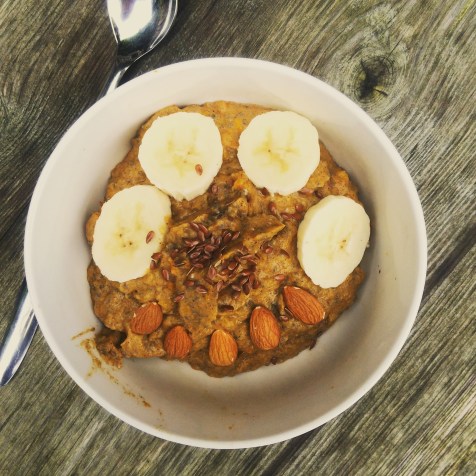
Pumpkins aren’t just for Halloween – they can be enjoyed all season long in both sweet and savoury dishes. It’s easy to find a pumpkin soup or baked pumpkin recipe, but have you ever thought about eating pumpkin for breakfast? The vitamin and mineral content, plus the abundance of fibre means this Autumn foods is great for keeping you satisfied and full all morning. If you’re wondering what to do with any leftover pumpkin too, this recipe is the perfect way to use up even small amounts, and it happens to be completely plant-based and gluten-free too.
INGREDIENTS (serves 1)
- 1 cup cooked pumpkin (or canned pumpkin puree)
- ¼ tsp cinnamon
- ½ tsp ginger
- Pinch of nutmeg
- 2 tbsp chia seeds
- 1 banana
- Splash of milk or plant-based milk
METHOD
- Add the pumpkin, spices, chia seeds and banana to a blender and whizz briefly
- Add to a bowl and top with seasonal nuts like hazelnuts or walnuts
4. Roots & Greens Pakoras
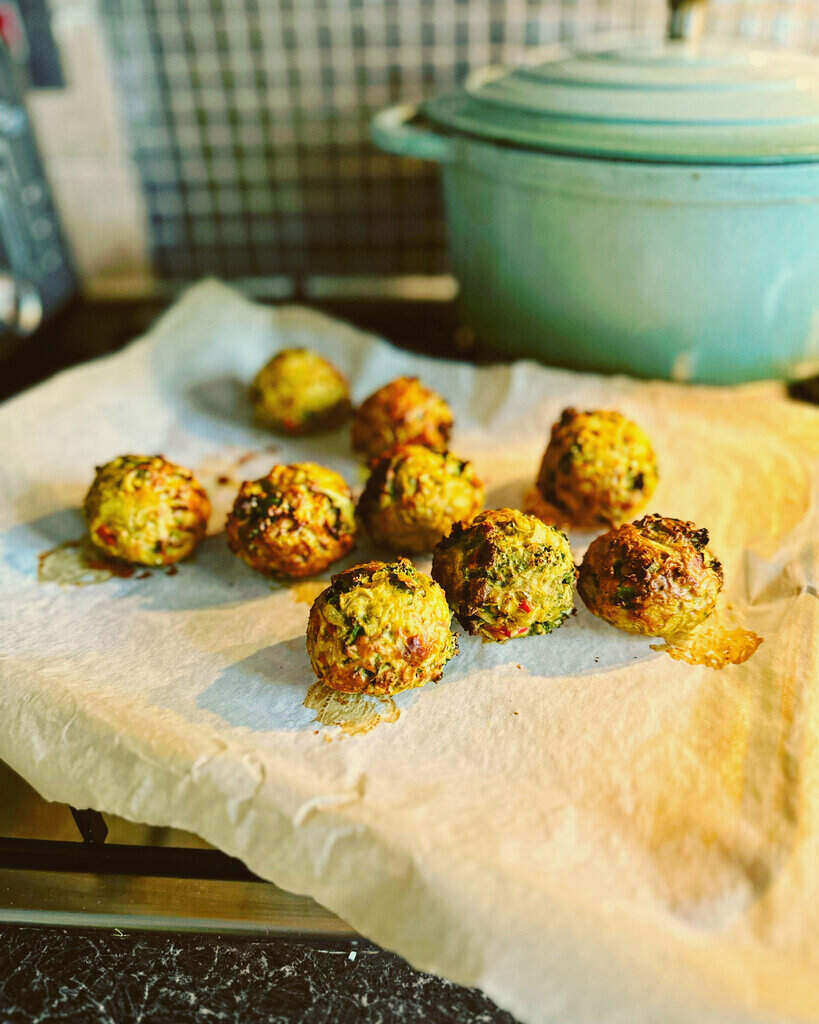
Packed with plant-based nutrients and plenty of vitamins to care for your immune system, this side dish or snack is a delicious savoury way to sneak more vegetables into your day. Pakoras are usually deep-fried, which can make them less-than-healthy, but this version is baked and uses zero oil.
We make the most of seasonal mineral-rich kale and grounding potatoes in this recipe, alongside spices that can help improve digestion. Serve these little balls of spiced goodness with a curry or soup, and save leftovers for healthy snacks throughout the week.
INGREDIENTS (makes roughly 10-12)
- 2 medium potatoes, grated
- 1 large handful kale
- 3 tbsp chickpea flour
- ½ tsp ground coriander
- ¼ tsp ground cumin
- ¼ tsp ground fennel seeds
- ½ tsp turmeric
- 2 tbsp water
- Generous pinch of salt and pepper
METHOD
- Pre-heat the oven to 200C
- Add all ingredients to a large bowl and mix with your hands to combine
- Wash your hands, but leave them slightly damp, and roll the mixture into balls (about gold-ball sized)
- If the mixture seems to dry or too wet, add more water or flour accordingly
- Place the balls on a baking tray and bake for 15-20 minutes or until golden brown
- Enjoy alongside a warming main dish, or as a snack
5. Rosehip Sip
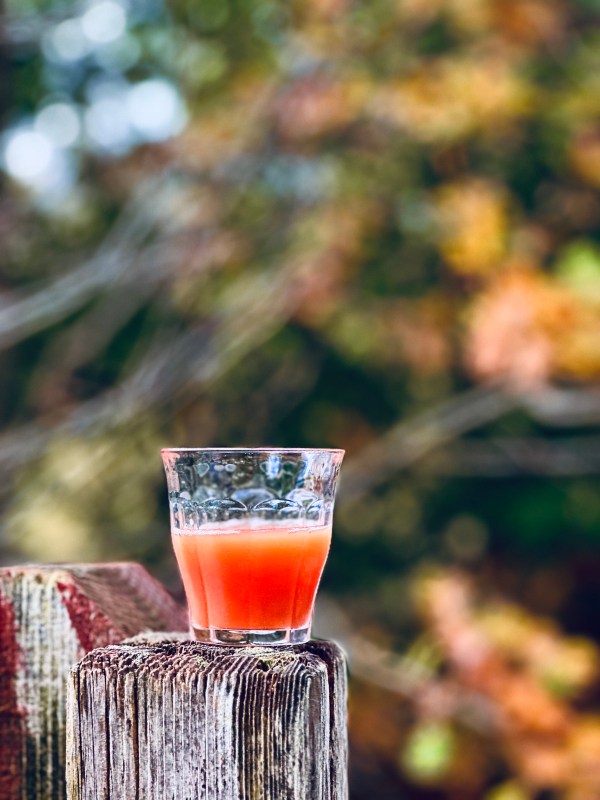
Rosehips are in abundance throughout Autumn, with their bright, shiny red skins looking almost like Christmas decorations amongst the brown and orange leaves and branches. Rosehips are very high in immune-protecting vitamin C, and also vital for the health of the adrenals. Before the widespread use of citrus fruits, rosehip were an important source of vitamin C to see us through the Autumn and Winter – they actually contain even more vitamin C than oranges and lemons!
If you’re a confident forager or know an expert who can guide you, this is the perfect time to collect rosehips and make this immune-boosting tonic. (Always be absolutely certain about what you are picking when foraging).
INGREDIENTS (makes roughly 1 litre)
- 2 large handfuls freshly picked rosehips
- 4 cloves
- 1 cinnamon stick
- 2 star anise
- 2 tbsp apple cider vinegar
- Juice of 1 lemon
- 2 tbsp honey
- 1.5 litres of water
METHOD
- Pick over and wash the rosehips
- Use a blender or food processor to finely chop the rosehips
- Add all ingredients other than the vinegar, lemon and honey to a large non-metallic pan
- Simmer gently for 20 minutes, then remove from the heat and leave to cool slightly
- Fold a muslin or very clean piece of fabric in half, and place in a sieve
- Strain the liquid through the fabric and sieve into a bowl or jug. It is important to strain through both the sieve and fabric to remove as much debris as possible. Rosehips contain tiny hair-like structures inside that can be irritating to the throat if consumed.
- Once strained, pour the liquid back into the pot and turn to a very low heat
- Add the vinegar, lemon and honey, stir and then turn the heat off completely
- Pour into a clean glass bottle and store in the fridge
This seasonal immune-boosting tonic should keep well in the fridge for roughly 3 weeks. Add a splash to sparkling water for a medicinal non-alcoholic cocktail, or drink 2 tbsp per day for a gentle and natural dose of vitamin C.
More Autumnal inspiration
- Vata Balancing Yoga For Autumn or Fall
- The Five Elements in TCM & Yin Yoga: Metal
- Living Seasonally: Tune Into Autumn
- Toasted Autumn Salad
Main image courtesy of Meg MacDonald on Unsplash.

